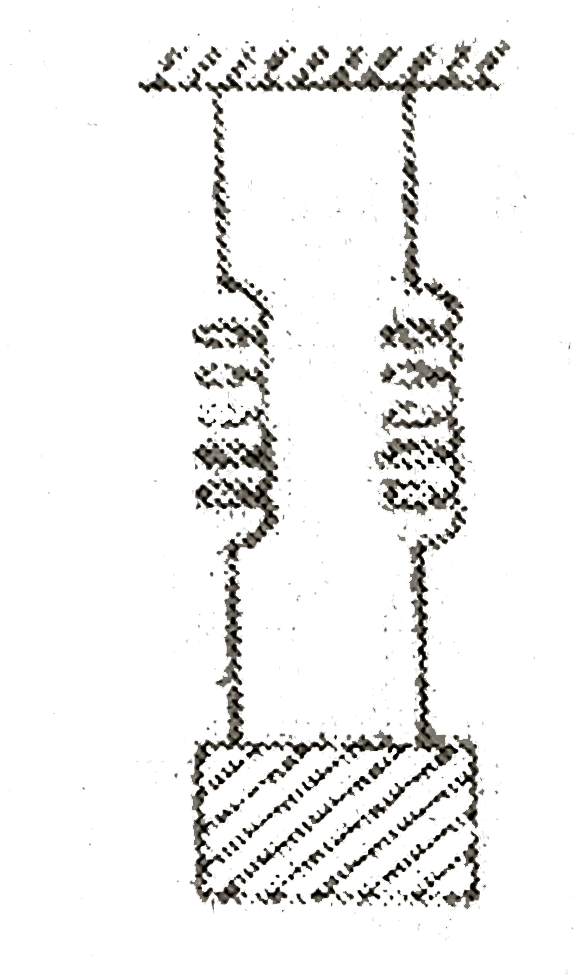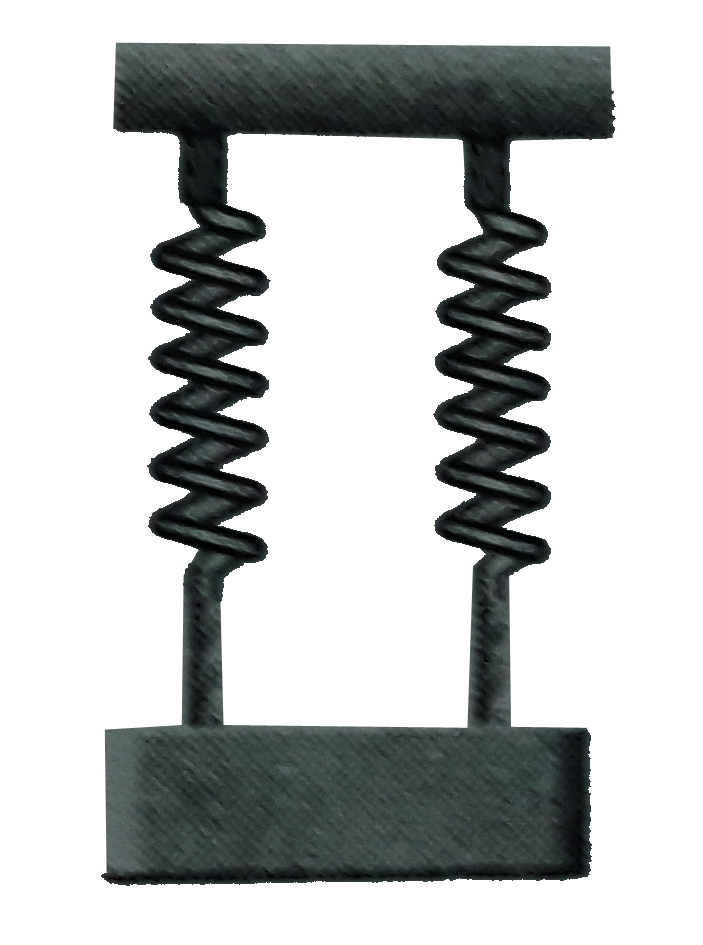A mass m is suspended from a spring. Its frequency of oscillation is f. The spring is cut into two halves and the same mass is suspended from one of the pieces of the spring. The frequency of oscillation of the mass will be
√2f
f2
f
2f
The correct Answer is:A
To solve the problem step by step, we will analyze the situation of the spring mass system before and after the spring is cut into two halves.
1. Understanding the Original System:
- The frequency of oscillation f of a mass m suspended from a spring with spring constant k is given by the formula:
f=12π√km
2. Cutting the Spring:
- When the spring is cut into two equal halves, each half will have a length of l2.
- The spring constant of a spring is inversely proportional to its length. Therefore, if the original spring constant is k, the spring constant of each half k′ will be:
k′=2k
- This is because the spring constant k is related to the length l as follows:
k⋅l=k′⋅l2⟹k′=2k
3. Calculating the New Frequency:
- Now, when the mass m is suspended from one of the halves of the spring, the new frequency f′ can be calculated using the new spring constant k′:
f′=12π√k′m=12π√2km
- We can factor out the square root of 2:
f′=12π√2√km=√2⋅12π√km=√2⋅f
4. Final Result:
- Thus, the frequency of oscillation of the mass when suspended from one half of the spring will be:
f′=√2⋅f
Summary:
The frequency of oscillation of the mass when suspended from one of the pieces of the spring after cutting it into two halves will be √2 times the original frequency f.
- The frequency of oscillation f of a mass m suspended from a spring with spring constant k is given by the formula:
f=12π√km
- When the spring is cut into two equal halves, each half will have a length of l2.
- The spring constant of a spring is inversely proportional to its length. Therefore, if the original spring constant is k, the spring constant of each half k′ will be:
k′=2k
- This is because the spring constant k is related to the length l as follows:
k⋅l=k′⋅l2⟹k′=2k
- Now, when the mass m is suspended from one of the halves of the spring, the new frequency f′ can be calculated using the new spring constant k′:
f′=12π√k′m=12π√2km
- We can factor out the square root of 2:
f′=12π√2√km=√2⋅12π√km=√2⋅f
- Thus, the frequency of oscillation of the mass when suspended from one half of the spring will be:
f′=√2⋅f
The frequency of oscillation of the mass when suspended from one of the pieces of the spring after cutting it into two halves will be √2 times the original frequency f.
Similar Questions
A mass m is suspended from a spring of force constant k. The period of oscillation is T0 The spring is cut into 4 equal parts: The same mass m is suspended from one of the parts. What is the new period?
View SolutionA spring has a certain mass suspended from it and its period for vertical oscillations is T1. The spring is now cut into two equal halves and the same mass is suspended from one of the half. The period of vertical oscillation is now T2. The ratio of T2/T1 is
View Solution
Knowledge Check
A spring has force constant K and a mass m is suspended from it. The spring is cut in half and the same is suspended from one of the havles. IF the frequency of osicllation in the frst case is α, then the frequency in the second case will be
A2 aBaCa/2Dα/√2
An object suspended from a spring exhibits oscillations of period T. Now the spring is cut in two halves and the same object is suspended with two halves as shown in figure. The new time period of oscillation will become

View SolutionThe time period of a mass suspended from a spring is T. If the spring is cut into four equal parts and the same mass is suspended from one of the parts, then the new time period will be
View SolutionA block of mass M suspended from a spring oscillates with time period T. If spring is cut in to two equal parts and same mass M is suspended from one part, new period os oscillation is
View SolutionA block of mass M suspended from a spring oscillates with time period T. If spring is cut in to two equal parts and same mass M is suspended from one part, new period os oscillation is
View SolutionA weightless spring has a force constant k oscillates with frequency f when a mass m is suspended from it The spring is cut into three equal parts and a mass 3 m is suspended from it The frequency of oscillation of one part will now become
View SolutionThe periodic time of a mass suspended by a spring (force constant k) is T. The spring be cut into three equal pieces. If the same mass be suspended from one piece, what will be the periodic time ?
View SolutionAn object suspended from a spring exhibits oscillations of period T. Now ,the spring is cut in half and the two halves are used to support the same object, as shown in figure. The new period of oscillation is .
 .
.
View Solution
